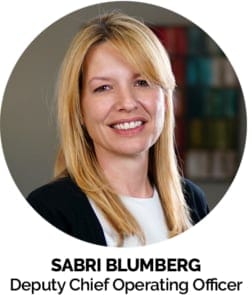Last updated on November 26th, 2025 at 08:12 pm

If you’ve recently heard that a big DSO (Dental Service Organization) opened up across town—or even next door, you’re probably wondering, “How am I supposed to compete with that?” I get it. On the surface, it looks intimidating. They’ve got the big signs, the massive marketing budgets, and they seem to be everywhere all at once.
But let me stop you right there: DSOs are not your competition. Seriously. They might be loud, but they’re not built like you. They’re playing a different game entirely—and trying to copy what they do won’t lead you to growth. It usually leads to burnout.
DSOs are designed for volume. They take all insurance plans, run multiple providers on tightly packed schedules, and focus on fast-paced dentistry. Your private practice? It thrives on something DSOs can’t manufacture: trust, relationships, and quality care.
So what should you do instead of losing sleep over DSOs? Let’s break it down.
1. Expand Your Practice Intentionally
Too many practice owners wait until there’s a perceived threat to start thinking about growth. But growth should be a natural part of how you operate—proactive, not reactive.

Start by asking yourself a few key questions:
- Is your marketing area defined?
- Do you know where your new patients are coming from?
- Is someone actively managing your internal referrals, online presence, and campaigns?
External marketing (SEO, Google Ads, social media, mailers) is great. But don’t underestimate the power of internal marketing. Satisfied patients who refer friends and family are worth their weight in gold. Make sure you’re asking for referrals—and rewarding them when they come in.
If you’re not seeing new patient volume consistently grow, it’s not because a DSO moved in. It’s a systems issue—and it’s fixable.
2. Improve Case Acceptance
Here’s a tough truth: new patients don’t automatically equal higher production. If you’re presenting treatment and patients aren’t saying yes, something’s missing.

Case acceptance is where private practices can really shine. Patients often prefer to say yes to treatment from someone they know and trust—but only if the presentation is clear, confident, and considerate of their concerns (especially financial ones).
So, how are you presenting treatment plans? If you’re the only provider, are you comfortable discussing money? If you have associates, is there someone closing for them consistently?
Many practices benefit from having a dedicated treatment coordinator—someone trained not just to explain procedures, but to make patients feel understood and empowered to proceed. And if you don’t have that role yet, then at the very least, you need to make sure someone in the office is taking ownership of this part of the process.
DSOs often fail here. The volume-focused model makes it hard for them to slow down and truly walk a patient through a $5,000 or $10,000 plan. You have that advantage. Use it.
3. Get Patients Scheduled and Seen Quickly
You did the hard part: you got the patient in, presented the treatment, and they said yes. Now what?
This is where a lot of practices unknowingly drop the ball. If you make patients wait weeks—or even months—to start treatment, you risk losing them. They get cold feet, life gets in the way, or they go elsewhere.
Your job is to close the gap between “yes” and the first appointment. That means having flexible scheduling options and training your team to prioritize patients who are ready to start.
Even small improvements here—like reserved blocks in the doctor’s schedule for larger cases or faster financial pre-authorization—can have a big impact.
Speed here isn’t about rushing the dentistry. It’s about showing your patients that they matter and that you’re ready when they are.
4. Lock the Back Door (Retention Starts in Hygiene)
You’ve probably heard the phrase “You don’t have a new patient problem—you have a retention problem.” And more often than not, that’s absolutely true.

Most DSOs have a constant churn of patients. They pour money into getting people in the door but do very little to keep them. That’s your opportunity.
Retention happens in hygiene. Think of your hygiene department like a patient loyalty engine. It’s where you build relationships, monitor ongoing care, and identify future treatment.
So ask yourself:
- Is your hygiene schedule consistently full?
- Are you actively reactivating patients who haven’t been in for 6+ months?
- Do you have enough hygienists to keep up with patient demand?
If your hygiene department is understaffed or overlooked, you’re missing out on thousands of dollars in production—and losing patients you’ve already paid to acquire.
We often see private practices that are great at getting patients in, but then lack a structured recall system. A simple hygiene reactivation system—calls, texts, emails, or postcards—can bring back hundreds of patients who just slipped through the cracks.
Final Thoughts: Play Your Own Game
Let’s wrap this up with the big picture.
DSOs aren’t your enemy. They’re a different model with different priorities. You don’t need to outspend them, out-staff them, or out-market them.
What you should do is double down on what makes your private practice valuable: real relationships, excellent service, and systems that work.
When your marketing brings in the right patients, your treatment presentations close consistently, your scheduling is smooth, and your hygiene keeps patients coming back—you’re untouchable.
So next time someone tells you a DSO just moved in nearby? Smile. Because they’re not your competition—they’re just background noise.
For any questions, give us a call at (800) 640-1140 or email me at Sabrib@mgeonline.com.




No Comments
Be the first to start a conversation